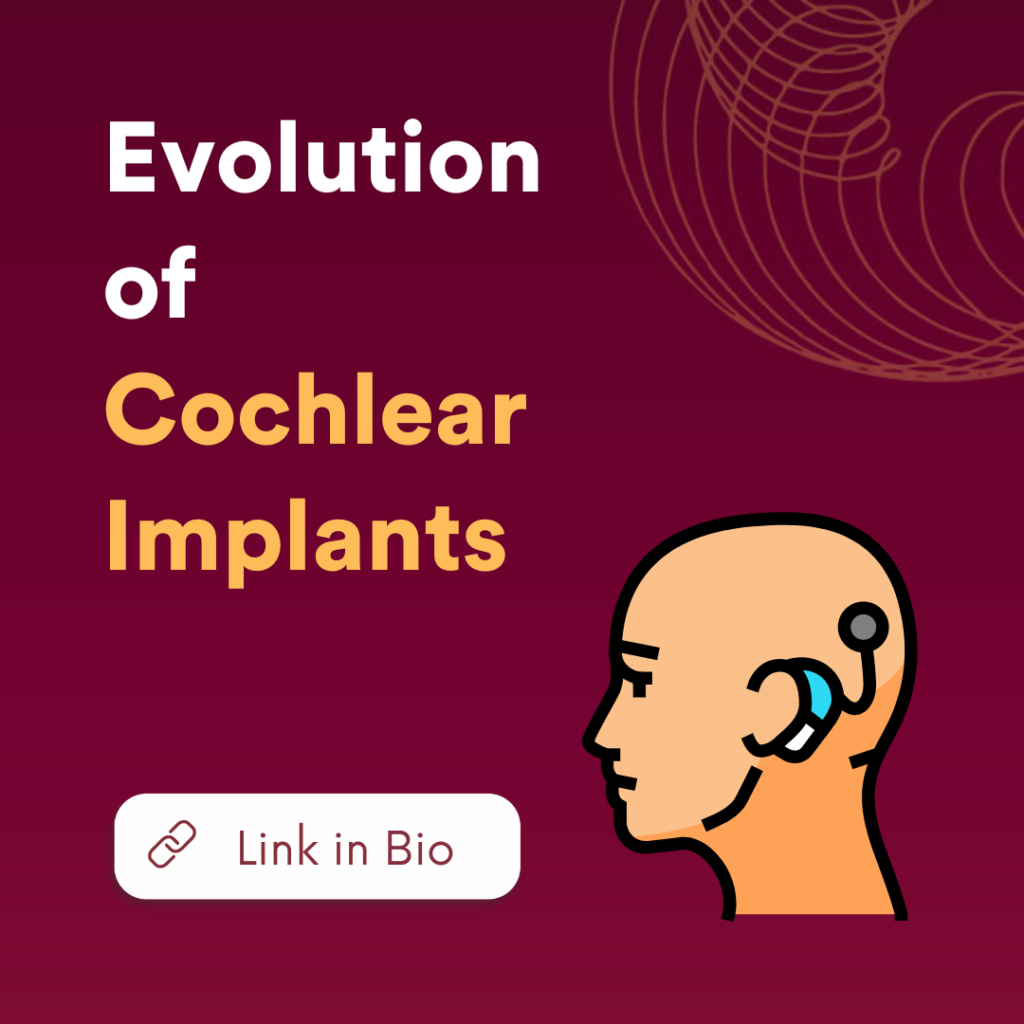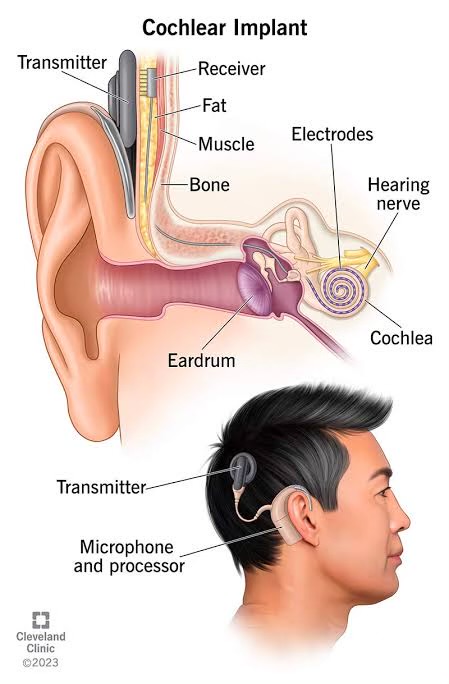Content by: Vaishnavi Singh, Barkha Boral
Design by: Bhavya Kalra, Bhavya Jain


What are Cochlear Implants?

A cochlear implant is an electronic device that improves hearing in people who have severe hearing loss due to damage of the inner ear. These sophisticated electronic devices, surgically implanted with precision, aim to restore the sense of hearing by directly stimulating the auditory nerve..
Evolution of CI
Early 1800s: Alessandro Volta
Volta, an Italian physicist who developed the electric battery, connected batteries to two metal rods that he inserted in his ears.He described this sensation as “a boom within the head.”
1950s: Lundberg
He conducted a neurosurgical operation where he stimulated a patient’s auditory nerve with a sinusoidal electric current
1950-1970s:
- In 1957, André Djourno and Charles Eyriès are acknowledged for their groundbreaking intra-auricular electrode implantation, foreseeing the future development of the CI
- In 1961, Drs. House and Doyle pioneered CIs by implanting gold-insulated electrodes in two deaf patients
- In 1964, Simmons implanted single-wire electrodes in a deaf-blind volunteer’s modiolus, distinct from scala tympani implants
- In 1969, Dr. House and Urban produced the first CI system that could be used outside of the laboratory and for many years by patients.
1978: Graeme Clark
In 1978, Graeme Clark achieved a milestone with the first contemporary multichannel CI, restoring hearing in a post-lingual deaf adult.
1984-2000
FDA approves multiple-channel implant for adults (1987), multiple-channel CI for children 2 years of age and older (1990), multiple channel for children 18 months and older (1998) and multiple channel for infants 1 year of age (2000).
Present Day
There are currently three FDA approved cochlear implant systems available today: Clarion, Nucleus and MED-EL
Features:
- They provide for multichannel stimulation
- They use transcutaneous communication between the externally worn hardware and the implanted electronic components
- They incorporate technology, known as telemetry, that can be used to monitor the integrity of the intracochlear electrodes after they are implanted
- They offer a range of different speech processing options

Working of Cochlear Implants
A cochlear implant works by converting sound into electrical signals that stimulate the auditory nerve, bypassing damaged hair cells in the cochlea.
Sound waves are captured by the external microphone, processed by the speech processor of the cochlear implant and converted into electrical signals.
These electrical signals are then transmitted to the electrode array, which is inserted into the scala tympani of the cochlea.
Electrical pulses travel through the fluid-filled chambers of the cochlea and interact with the electrolytes present in these fluids.
Surgery
1. The surgeon makes an incision behind the ear, to access the mastoid bone and cochlea.

2. Soft tissues are gently dissected to expose the mastoid bone

3. A small portion of the mastoid bone is drilled away to access the middle ear space and the cochlea

4. Structures surrounding must be taken care of.

5. A small opening is made in the cochlea to access the scala tympani. The opening is typically made in the round window

6. A hole is created in the mastoid bone. The size and of the hole is chosen to accommodate the implant structure.

7. An electrode array, which consists of a thin, flexible wire with electrodes along its length, is carefully inserted into the cochlea, into the scala tympani.

8. About 2-4 weeks after surgery, the external components of the cochlear implant system are activated
